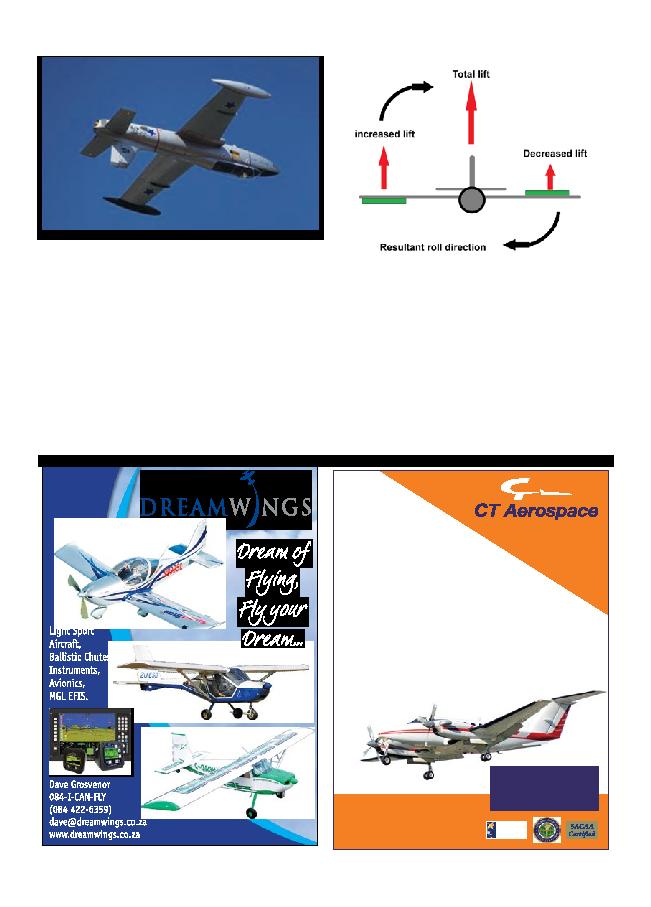
62
GA
/ Vol. 5 / No.9 / SEPTEMBER 2013
Another misconception is rolling
"g". I have heard many a pilot say he
barrel rolls his 210 or Cherokee but
says it won't do any harm as he only
pulls 2 "g". Very few aircraft ( most
of those not approved for aerobatics)
do not even list the rolling "g" limit,
it is typically 60-70% of design max
"g" load approved for that aircraft.
A utility aircraft stressed to 3.5 load
can only be subject to a rolling "g"
of about 2.1 "g". When you are
pulling up in a barrel roll at two g, the
outside wing in being subjected to an
effective load factor of 3.5 "g". If the
aircraft is now close to its manoeuvre
stall speed, the up going wing
outboard section has an increased
angle of attack due to the changed
cord line with the down going aileron,
increasing the relative airflow angle
of attack over that section. The lift
acting on that section of the wing
increase and so does the load factor.
Sensitive to any negative loads
and cuts out at the slightest hint of
less than 1 "g", The SAAF Museum
Spitfire was fitted with the same
engine and even when flying in
formation on the inside of a turn the
engine used to splutter if the aircraft
was rolled into the turn too fast. In
the late nineties the only surviving
Mosquito was doing a fly-past at a
show in England, the pilot pulled up
into a high speed climb and rolled
hard to the right. The engines are
situated quite far outboard of the
SPORTSTAR
TUNDRA
A-22 FOXBAT
fuselage and the up going wing was
subjected to an increased load, the
down doing wing was then subjected
to less than 1"g" load and the engine
cut, the pilot then closed the power on
the left engine and rolled the wings
level, the forces are now balanced
and no resultant roll, however the
pilot had not closed the throttle on
the right engine. When the wings
were rolled level ( to the left) the right
wing ( now the up going wing) was
subjected to a positive load again and
the engine took at full throttle, the
resultant yaw to the left resulted in the
aircraft departing into an asymmetric
spin at low altitude with the loss of
the aircraft and both crew members.
A piece of irrelevant information
- during the height of the Battle
of Brittan, the Spitfires could not
out dive the ME109 as they had
an inverted fuel system. A lady in
the Merlin engine shop at the time
said why don't they drill a hole
in the bottom of the carburetor
to allow the flow of fuel to the
engine under negative "g" loads.
This was done and that hole in the
Merlin carburetor is now known
as "Miss Shillings orifice" If you
don't believe me, see it at (Google
Mosquito crash Barton aerodrome
Manchester 21 /7/1996). ·
www.ctaerospace.com
Accessory Support
Component Support
PT6/JT15D Engine Sales and Support
Complete Engine Overhaul Management
Engine Overhauls:
PT6
JT15D
PW100
The Innovative Edge
Fernand Foisy
ffoisy@ctaerospace.com
Mobile: + 27 82 573 9842
For purchases and sales of
aircraft engines and engine parts,
get the innovative edge with
CT Aerospace.
Our customers include MRO facilities, leasing
companies, aircraft operators, engine part distributors
and dealers throughout the world.
We're always interested in buying high-quality used parts and
engines to satisfy our customers' needs.
EASA

